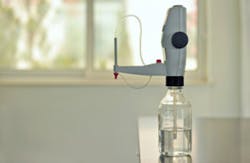In Water Technology’s February feature, "Helping private well owners with testing," Editorial Director Rich DiPaolo writes about how water dealers should educate private well customers and prospects on proactive approaches to water quality testing.
Unregulated wells not tested frequently can put end users at risk of an array of odorless, tasteless and colorless contaminants that are unsafe for consumption.
EPA urges testing private wells in potentially harmful situations, such as:
- Heavily developed areas with land uses that handle hazardous chemicals
- Recent well construction activities or repairs
- Elevated contaminant concentrations found in earlier testing
- Noticeable variations in quality such as a change in taste, smell or appearance after a heavy rain or an unexplained change in a previously trouble-free well, such as a strange taste or cloudy appearance.
However since water quality, as well as environmental and well conditions, may change throughout the year, it is crucial for dealers and homeowners to be proactive when testing wells.
In addition to the benefit of safeguarding safe, clean water supplies, well water testing — through proper education and data — places water treatment dealers in a position to boost new and repeat business.
Be sure check out the entire feature on educating customers on well testing in Water Technology‘s February issue.
